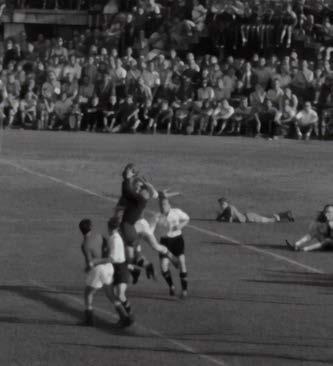
2 minute read
LET’S GO BACK TO THE START
Modern football, shaped by a captivating journey of tactical evolution spanning a century, has transformed the way we experience the game. Let's travel back to its early days, where a simpler formation reigned: 7 forwards, 2 half-backs, and 1 full-back. Midfielders and their vital role had yet to be introduced, leaving formations to freely combine offensive and defensive players. These flexible configurations thrived across countries in the 1880s, each with its unique variations.
During this era, the renowned Preston North End team, known as the "Invincibles," introduced and popularised the remarkable "Scottish Style" of football. Their ground-breaking 2-3-5 formation, consisting of two full-backs, three half-backs, and five forwards, revolutionised the game. Notably, they clinched the championship and emerged victorious in the 1889 FA Cup, leaving an indelible mark on football history.
Advertisement
The dominance of this formation prevailed until the 1920s when the introduction of offside rules demanded fresh tactics. Arsenal, ever the pioneers, responded with their inventive 3-3-4 formation. This strategic shift aimed to employ offside traps against teams with a surplus of attacking forwards. The
Evolution Of Football Tactics: How They Have Evolved Through The Years
system brought a more defined structure to the game, fostering creativity in midfield and granting defenders increased flexibility at the back. Today, this formation is hailed as one of the earliest manifestations of counterattacking football.
Witness the captivating evolution of football tactics, where the spirit of innovation and strategic adaptation have forever shaped the game we adore. Join us as we explore the intricate dance to Pep Guardiola's Barcelona team, whose direct attacking play drew inspiration from the renowned 'Total Football' of the 1970s. However, the origins of Pep's influential formation can be traced back even further, to 1930s Italy. Enter the Metodo System, a tactical marvel introduced by Vittorio Pozo, the coach of the Italian National Team. between tradition and progress, unearthing the secrets that lie beneath the surface of every mesmerising match.
MIDFIELDERS AND ATTACKERS:
The Metodo System, a revolutionary 2-3-2-3 formation, showcased two full-backs, a half-centre back, two half-backs, two midfielders, and an attacking trio with a centre forward leading the charge. This formation heralded a ground-breaking shift, introducing the concept of midfielders to propel the ball forward, replacing the traditional half-backs of earlier formations. Pozo's visionary approach saw the emergence of inside forwards, a breed of midfielders, who orchestrated swift attacks through short passes. Not only did this transformative system pave the way for modern counter-attacking football, but it also fortified the defence as a cohesive unit.
One of the most impactful football styles witnessed in the modern era traces its roots
The Metodo System's profound impact became evident in Italy's triumphs during the 1934 and 1938 World Cups. The tactical prowess, strategic cohesion, and inventive use of midfielders propelled Italy to glory, leaving an indelible mark on football history. With each victory, the system's influence reverberated across the globe, inspiring future

The Evolution Of Football Tactics: How They Have Evolved Through The Years
generations of football tacticians. However, a formation emerged as a symbol of balance and brilliance: the 4-2-4. Surpassing earlier formations like WM and WW, this strategic masterpiece took centre stage during the historic 1954 World Cup, led by Uruguay's Gustav Sebes.
The 4-2-4 formation seemed to bring teams together, creating a robust defence with an electrifying attack. Defenders played a crucial role in advancing the ball, unleashing a proactive style. By maintaining a high defensive line, players swiftly pierced through opponents' midfield lines. Brazil's national team notably embraced this system, achieving historic triumphs in the 1950 and 1970 World Cups.
The formation's appeal captivated teams worldwide, spurring its widespread adoption and inspiring new styles of play. Fast forward to the present day, and the echoes of the Metodo System still resonate. Guardiola's Barcelona team masterfully adapted this historic formation, infusing it with their own distinctive style. Their captivating brand of direct attacking football harnessed the essence of the Metodo System, leaving an indomitable mark on the beautiful game.








